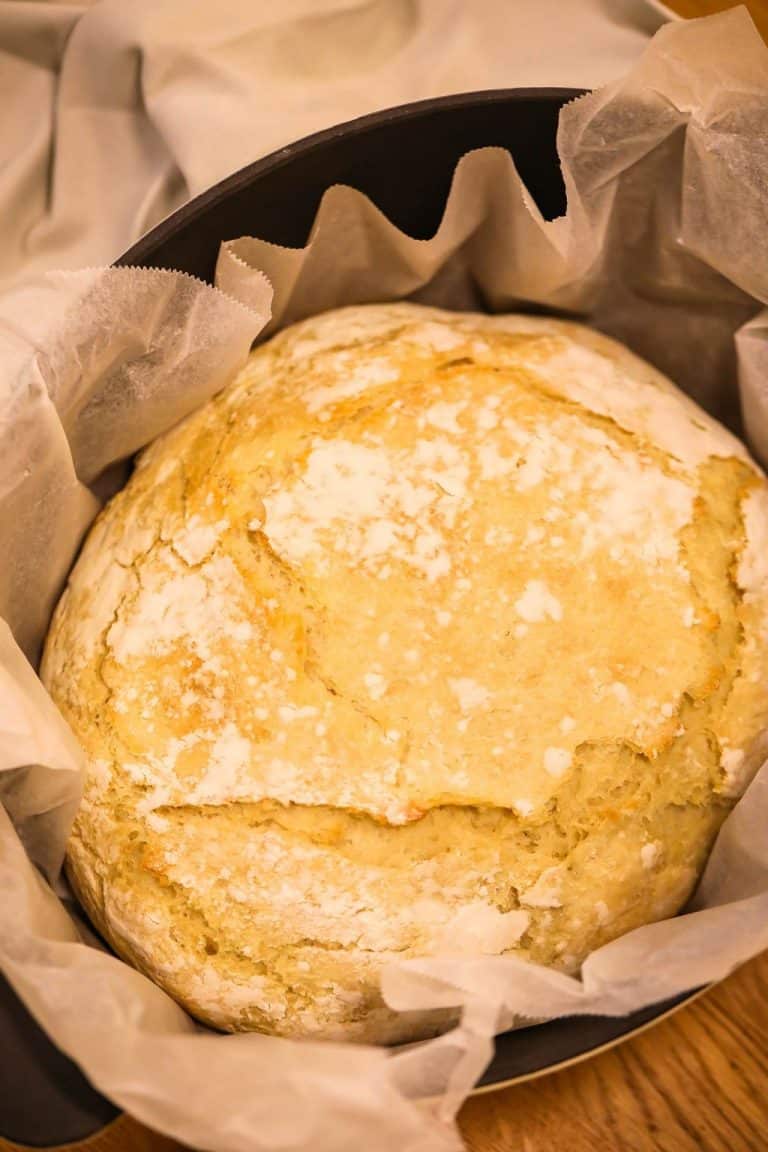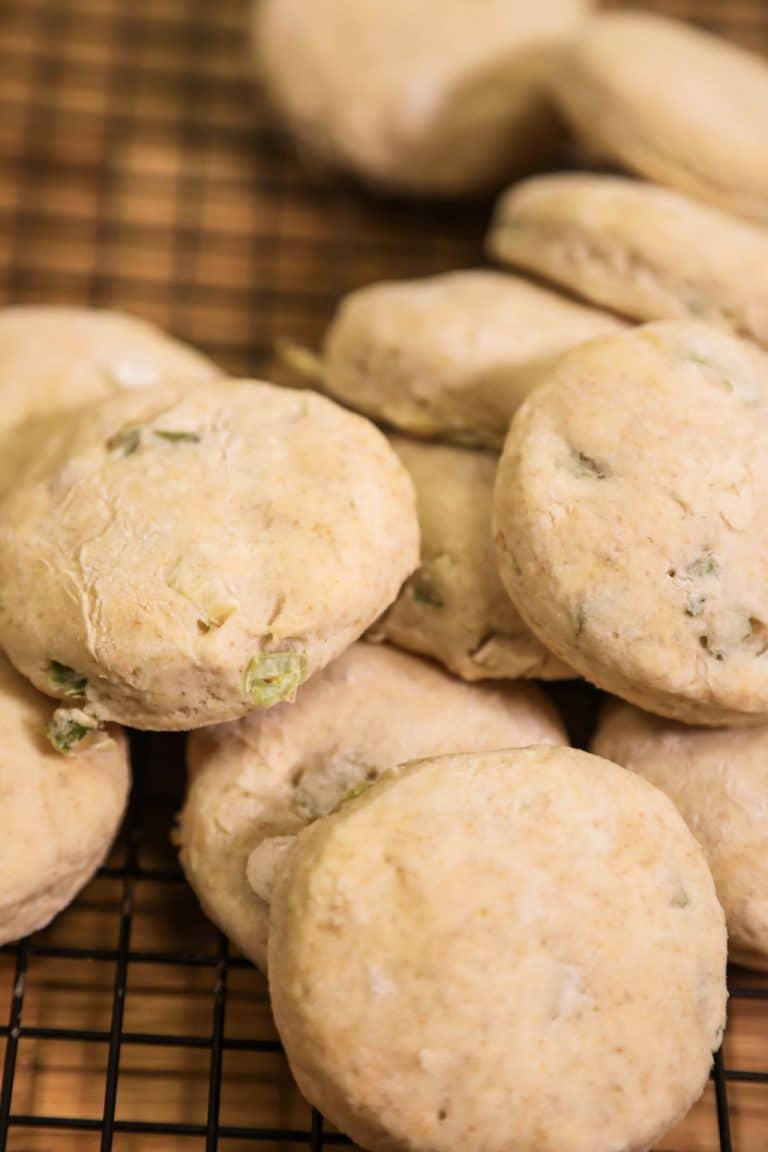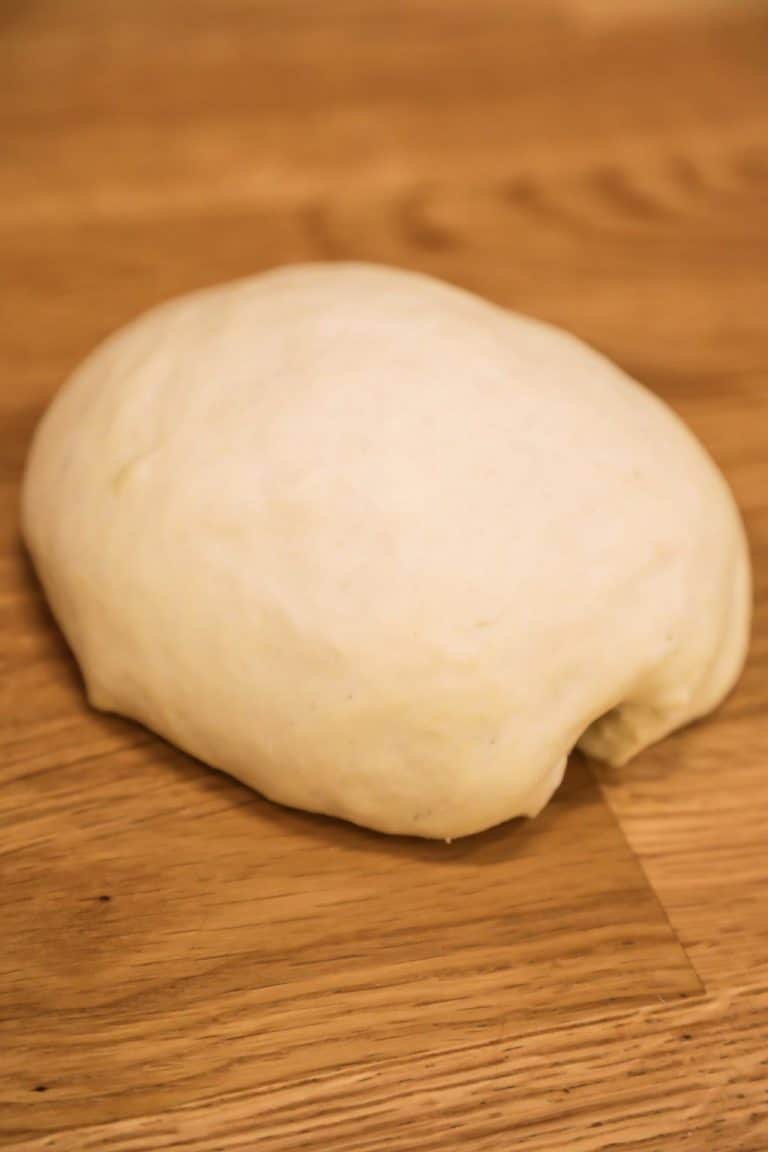Fig Jam (Middle Eastern Style)
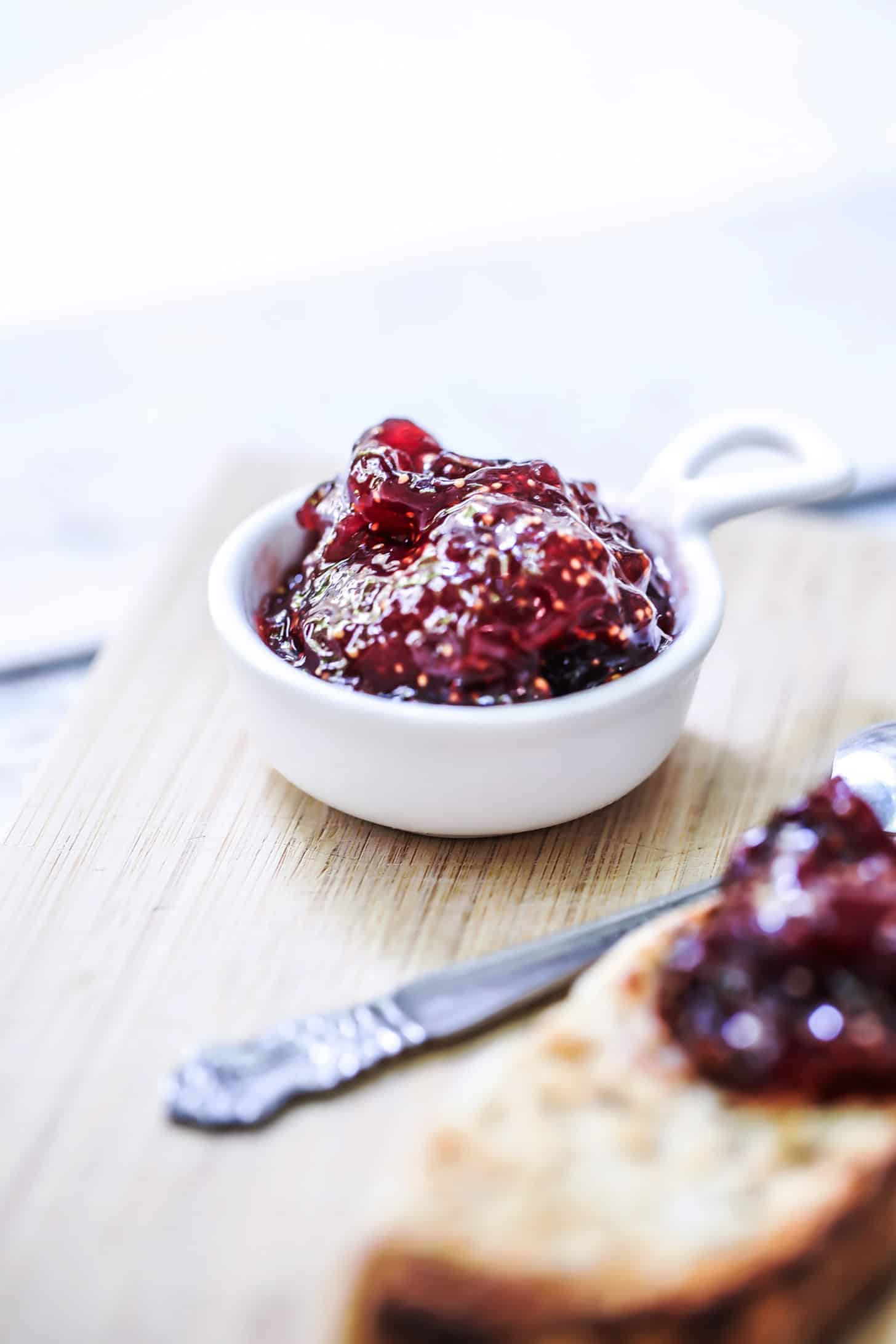
I love figs, a beautiful fruit that brings so much when fresh, and so much more as fig jam.
The Levant is full of fig trees, and figs are a popular fruit that many people in the region grow up eating.
Many families have their own fig trees in their yards, yielding the most gorgeous fruit.
The big challenge for most folks in the region is beating the birds to their figs.
These eagle eyed predators are on the job during fig season, and they very often get a bellyfull.
Brief History of The Fig
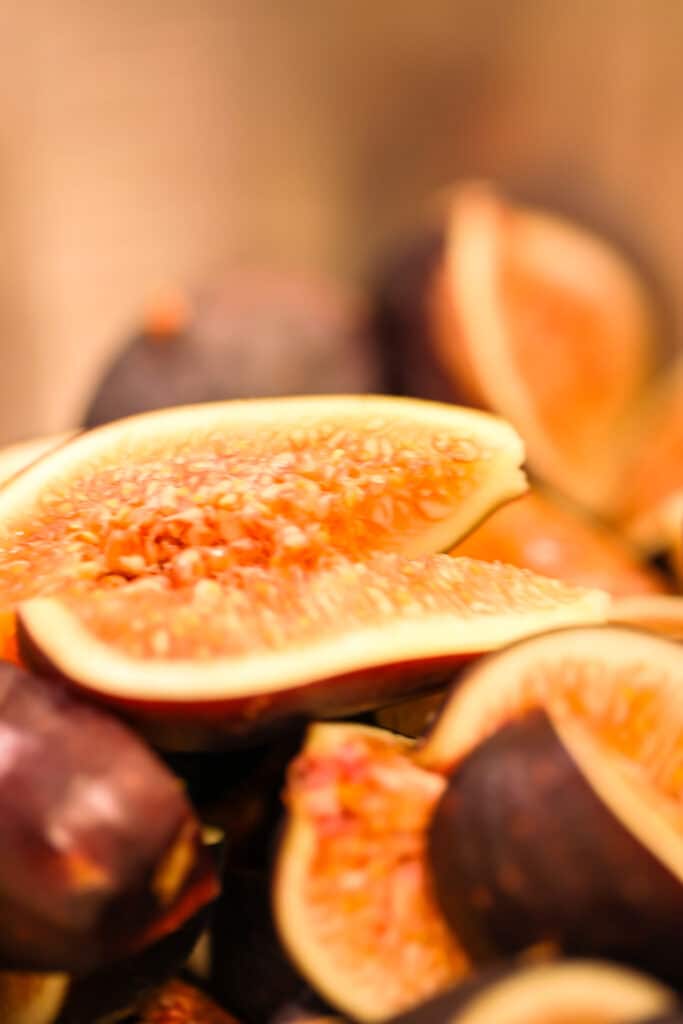
One of the oldest fruits eaten and cultivated by humans, figs were used frequently to sweeten dishes.
The common fig, ficus carica, is a flowering fruit tree that belongs to the mulberry family.
These trees actually form a fleshy pouch in which the flower blooms on the inside, and this is what creates the fig.
First found in Asia Minor, countries like Turkey, Iraq, Iran and Syria, the fig tree was spread throughout the Mediterranean by the Romans.
Figs are symbolic of fertility, peace and prosperity in many cultures and religions around the world.
The fig tree appears in the bible, but was around, and being cultivated way before then.
Remains of fig trees have been found dating back to 5000 B.C. in Neolithic excavation sites.
Stone tablets dating back to 2500 B.C. have depicted figs being used for culinary purposes.
Fig trees typically grow to about thirty feet tall, and can live up to one hundred years.
It is a tree that does not require cross pollination since it only produces female flowers.
This deciduous tree grows in sunny and dry areas, and tolerates seasonal droughts.
Hundreds of different varieties of figs exist in the world, with only a few gaining global popularity.
Like mose produce the reason for this is usually down to hardiness, appearance, and flavor.
How to Make Fig Jam
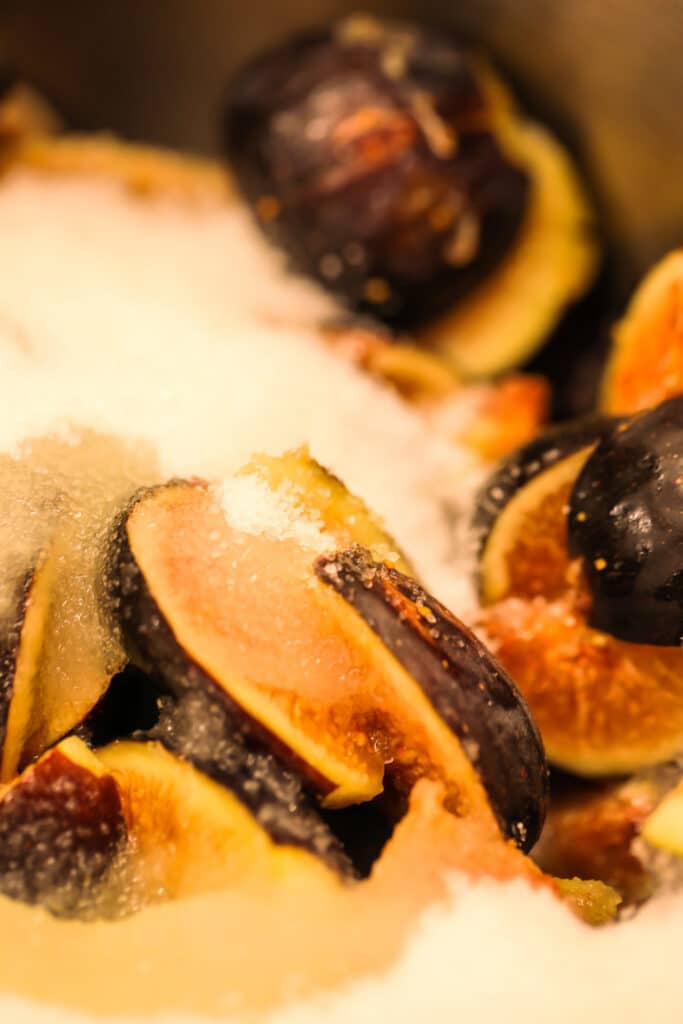
This homemade fig jam recipe is so easy to make in under 30 minutes.
Cut the fresh figs into quarters, I like to use mission figs for my jam, then put them in a heavy bottomed pot.
Place the pot over medium heat and the sugar and lemon juice, stirring occasionally to begin with.
Bring to a boil, then reduce the heat until you have a good simmer going, then begin stirring frequently.
Continue to heat, stirring, until it reaches 220 degrees fahrenheit, or 105 degrees celsius.
Turn off the heat and allow the jam to sit for 15 minutes, if adding vanilla extract this is when you would do it.
Sterilize some jars with tight fitting lids in boiling water and jar the jam while still hot.
Follow canning and jarring instructions.
Allow the jam to cool, and serve with goat cheese, for a special treat.
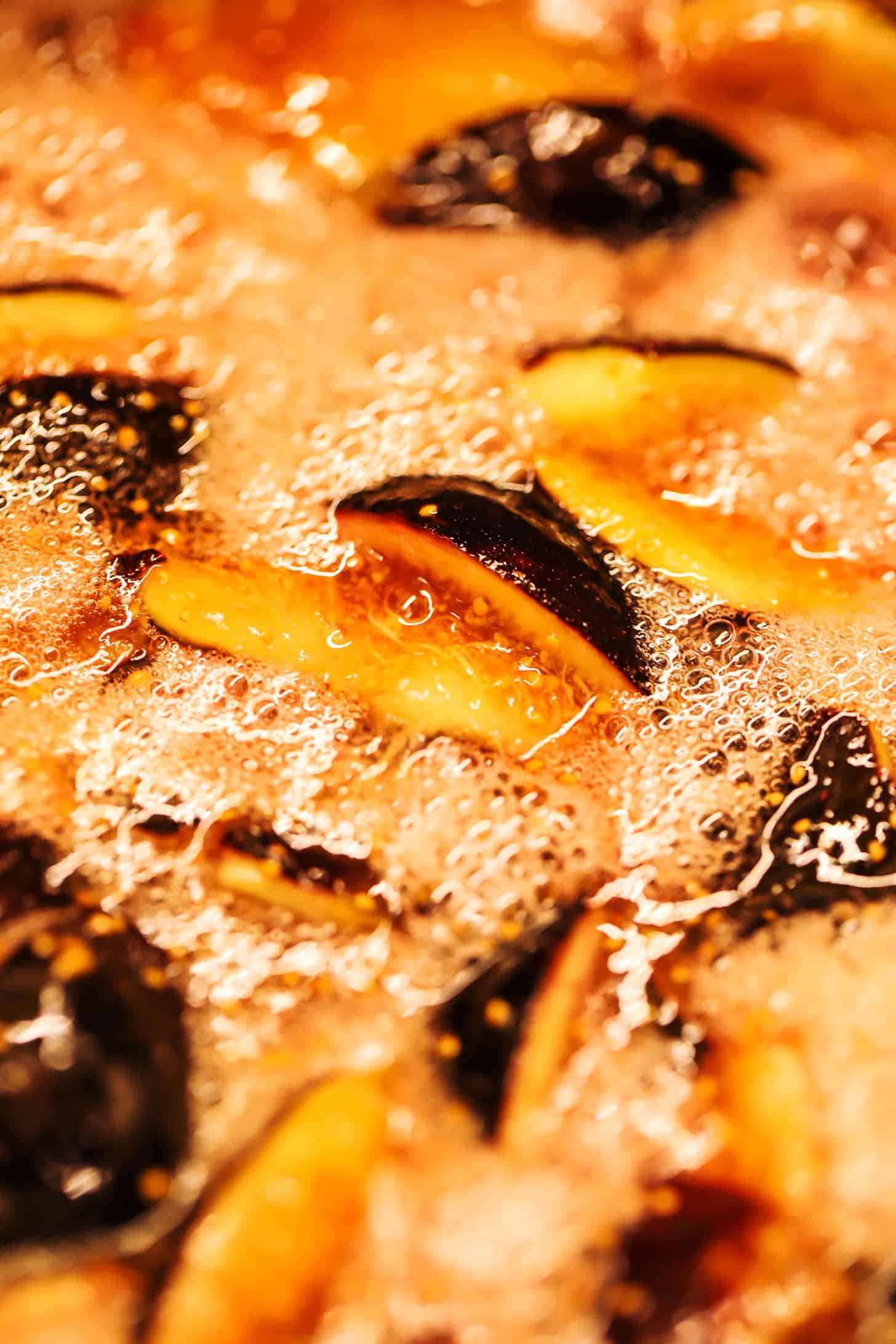
What to Serve with Fig Jam
Fig jam on a nice piece of toast, with or without butter is one of the purest ways to eat this delightful food.
Made all the better with a homemade loaf of sourdough bread.
Serve fig jam as part of a cheese board, especially with goat and sheep cheeses.
Also try this jam in a cheese sandwich with a little balsamic vinegar mixed in.
Try spreading thinly as a base for flatbread with salty cheese, fresh basil, and cherry tomatoes.
American style biscuits with ham, mustard, and this lovely jam is an amazing combination.
Put a little jam in the center of thinly sliced salami slices and make rolls with toothpicks holding them closed.
Puff pastry rolled out with a layer of fig jam topped with balsamic onions and fried pancetta.
Make a crostini with fig jam, brie cheese and chopped black olives.

Health Benefits of Figs
Figs have a lot of health benefits that people have been aware of throughout time.
The Prophet Mohammed (pbuh) is said to have told his followers “eat it as it cures various diseases” when speaking of figs.
Of course the following is based on eating fresh raw figs, things change when sugar is added, and jam is made.
However, the figs themselves do have nutritional benefits in jam, just not as many as when fresh.
Figs are said to promote better digestive health, allowing the body to more efficiently digest food.
Figs and fig leaf tea both have anticancer properties shown in laboratory tests.
Vascular health can be benefited by eating figs, along with heart health, also managing blood sugar levels.
And it is said that if you want better skin, a cream with fig extract will help.
But above all else in my opinion, figs provide fiber to your diet along with the most incredible flavor.
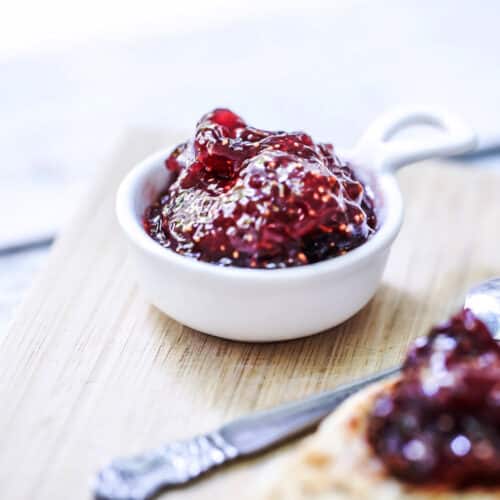
Fig Jam (Middle Eastern Style)
Instructions
- Slice figs into quarters, and place in a heavy bottomed pan.
- Add the sugar and lemon juice.
- Heat over medium heat, stirring occassionaly.
- Continue cooking until temperature reaches 220ºF (105ºC), about an hour.
- If you wish to can, follow canning instructions.
- Otherwise cool to room temperature and store in the fridge.


